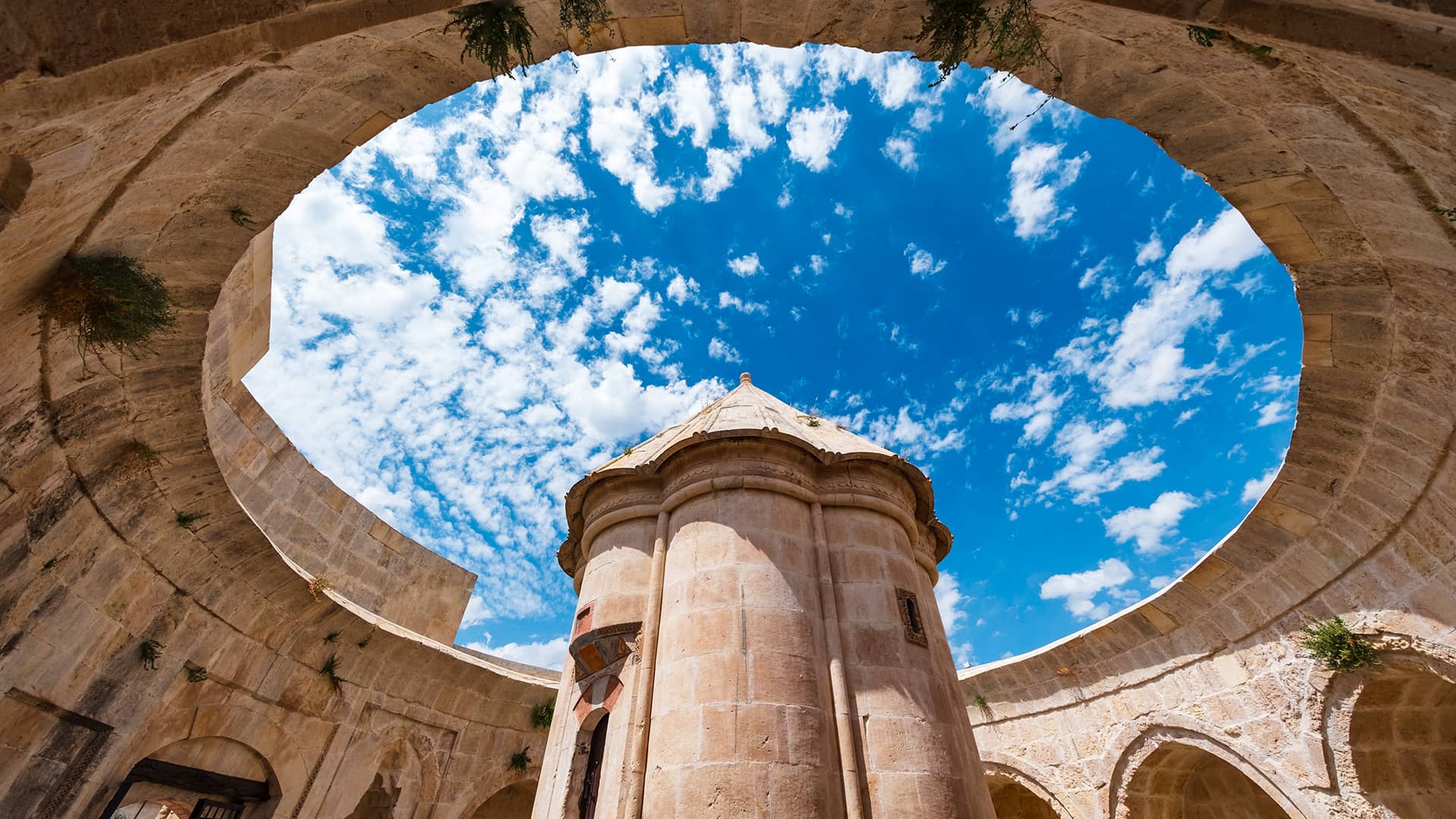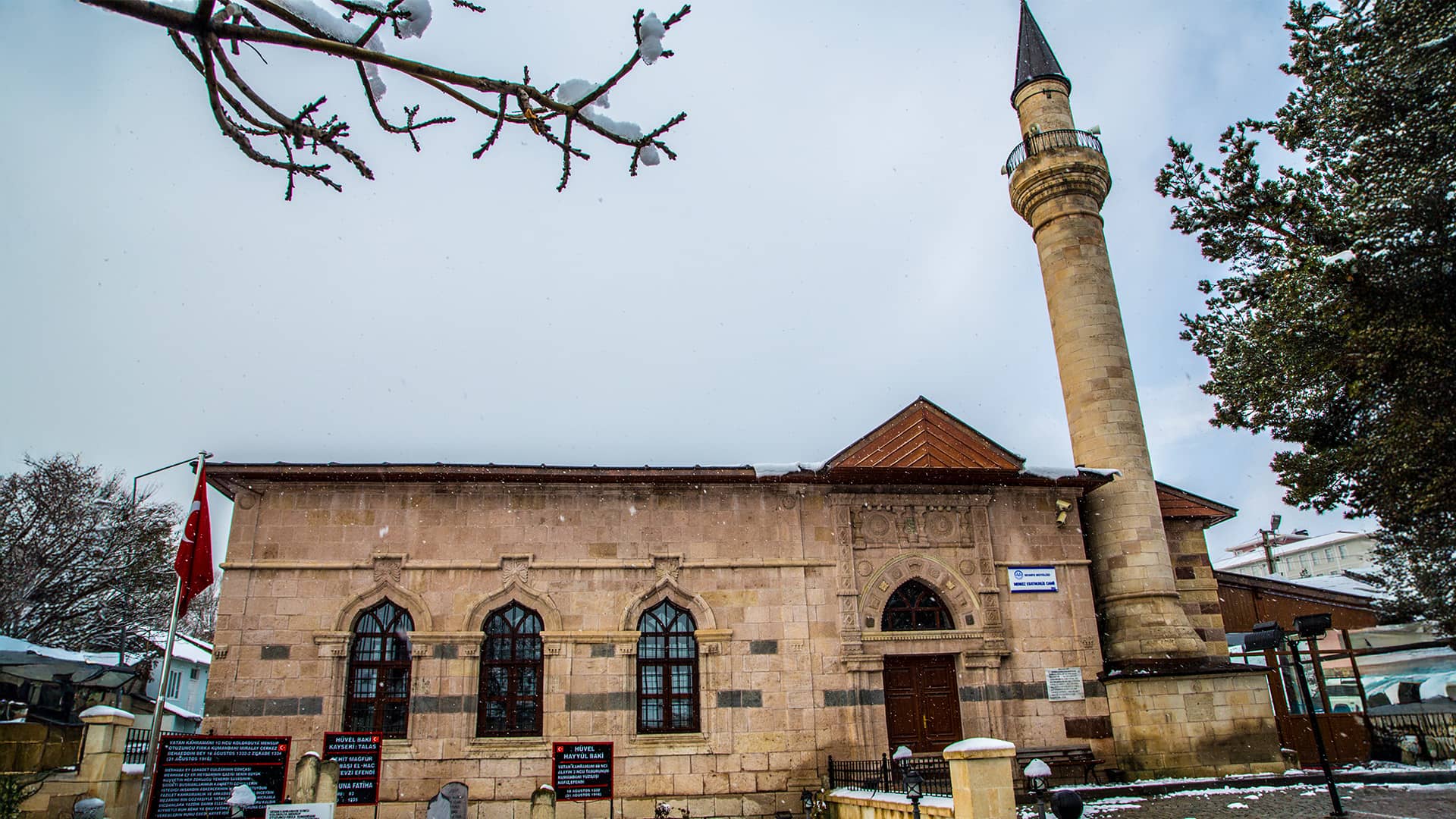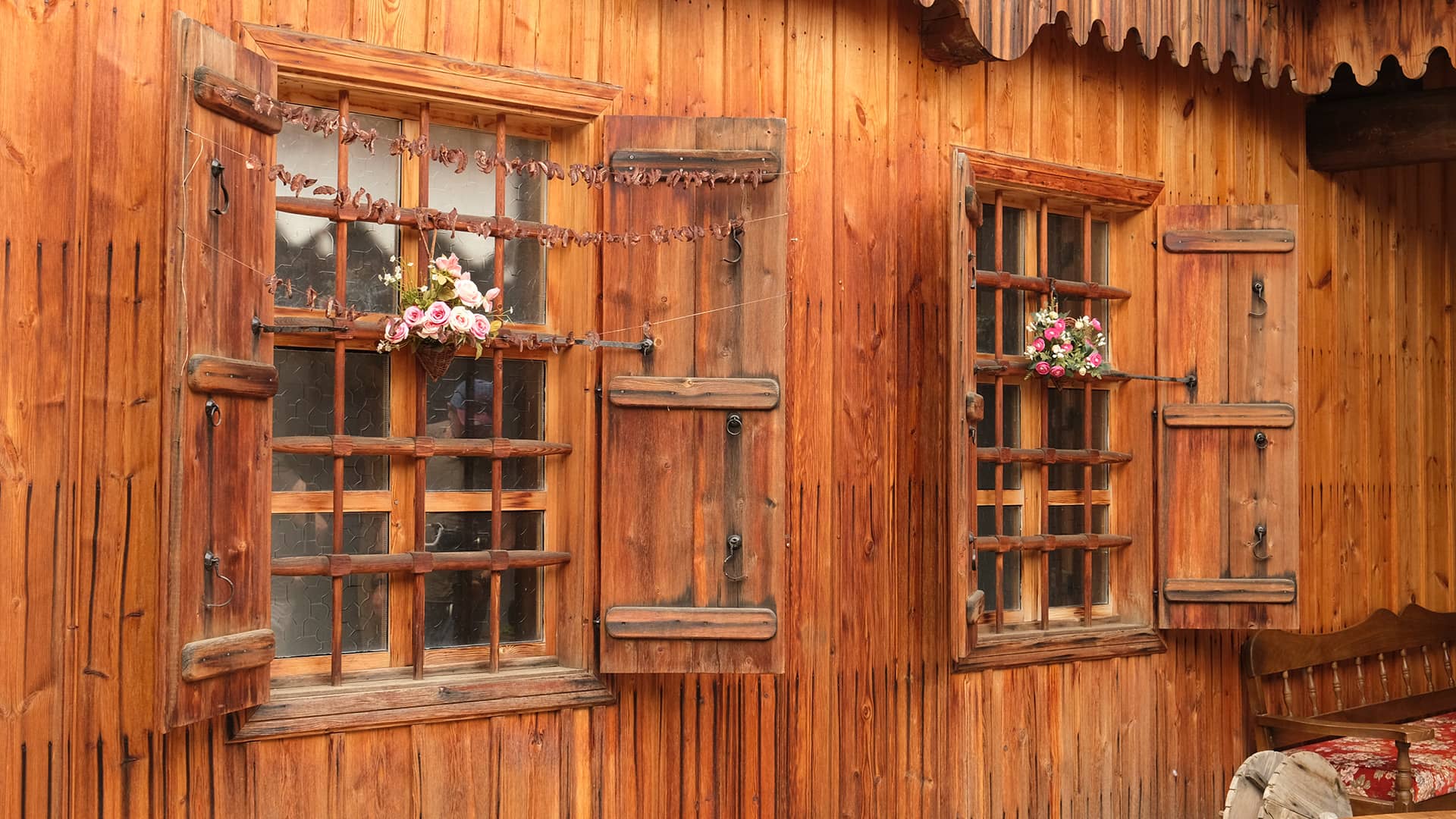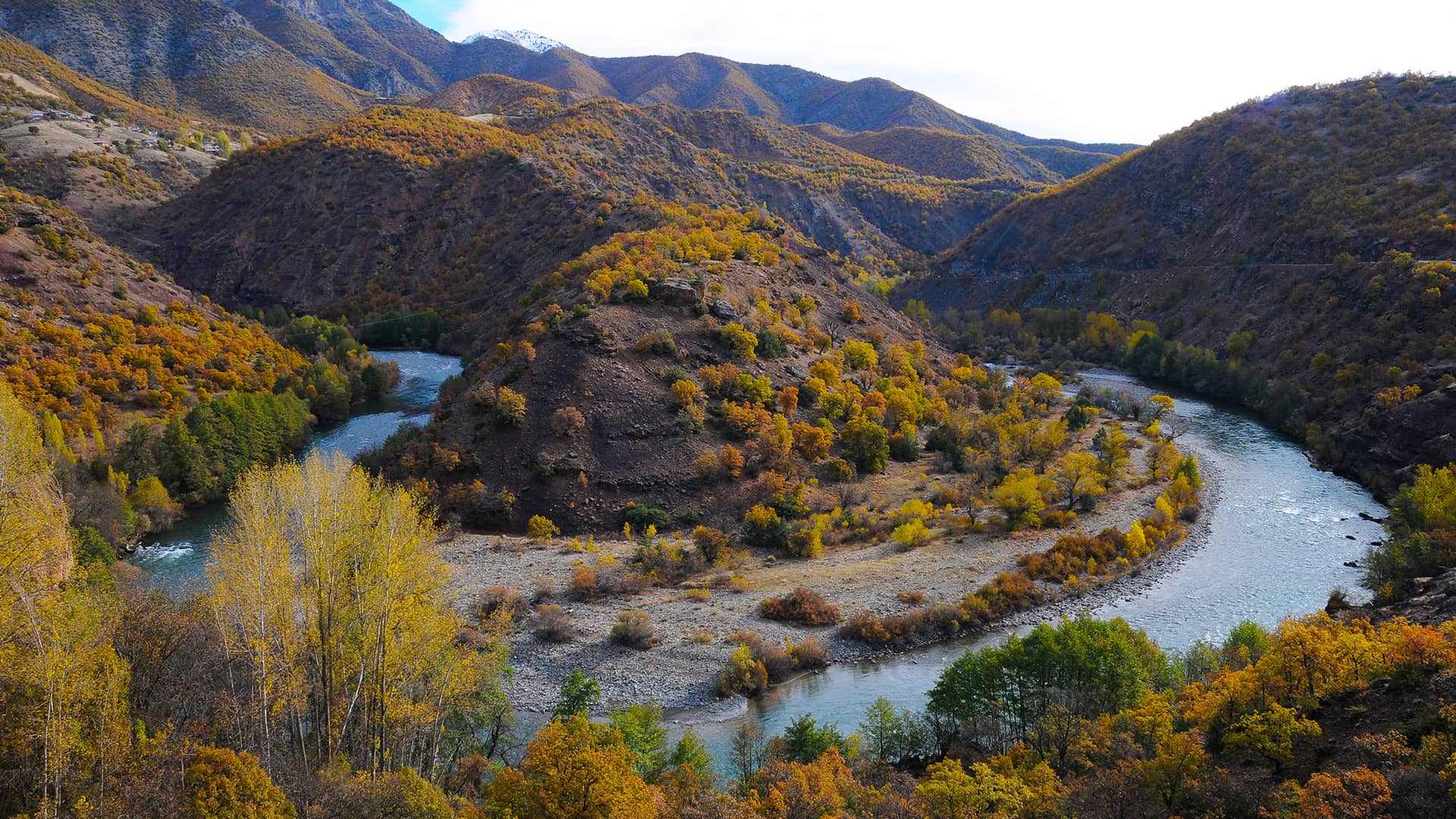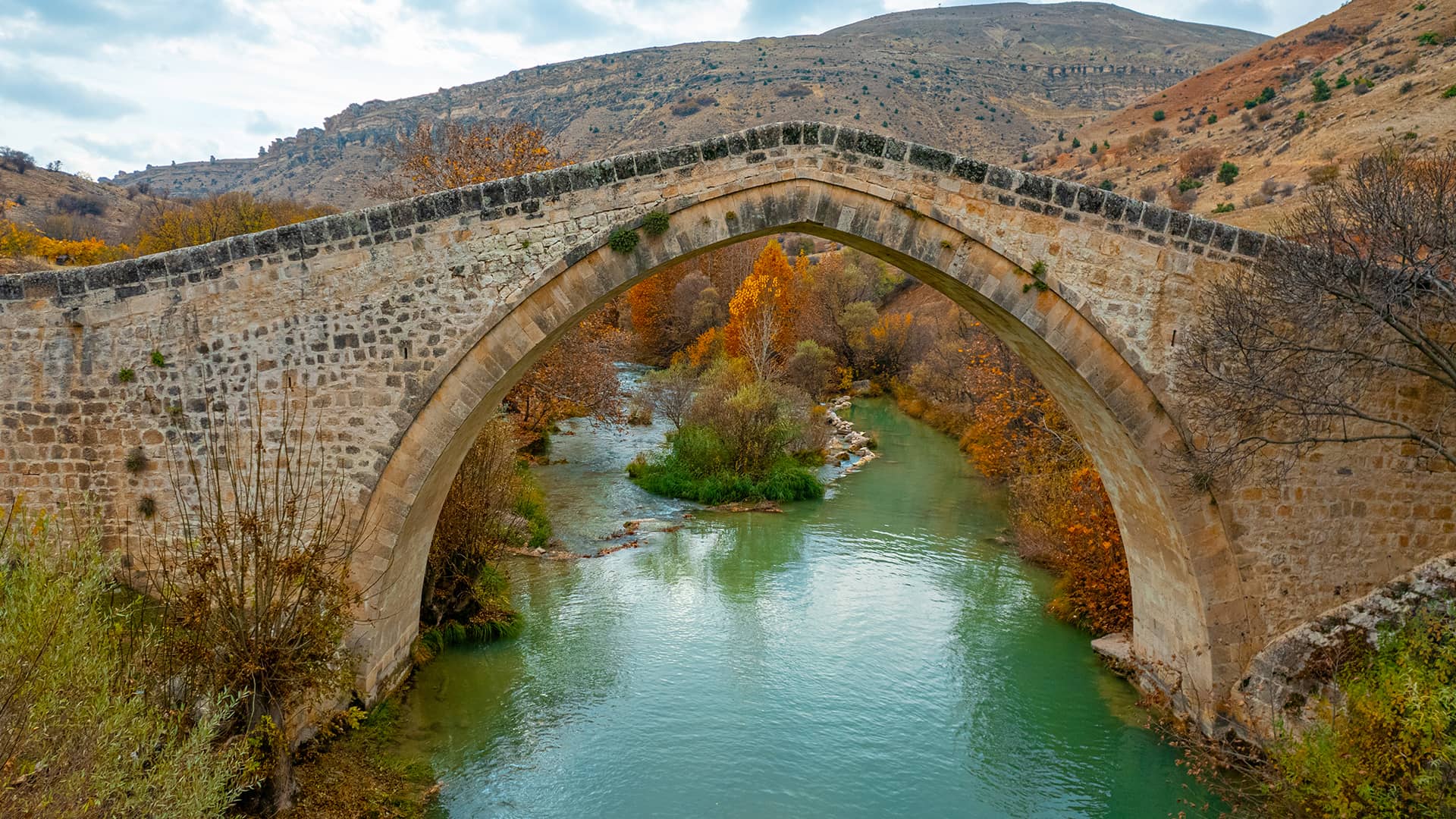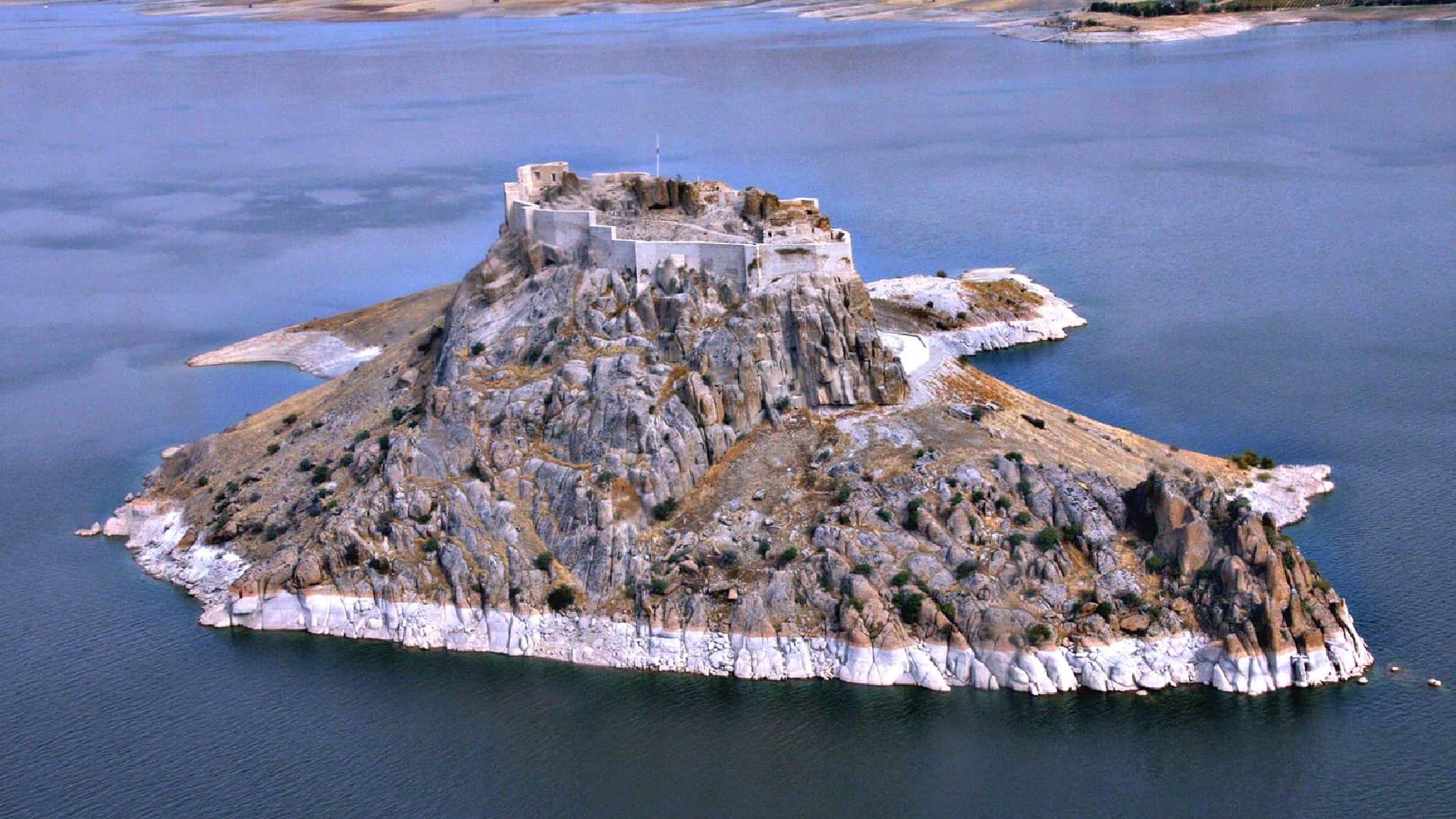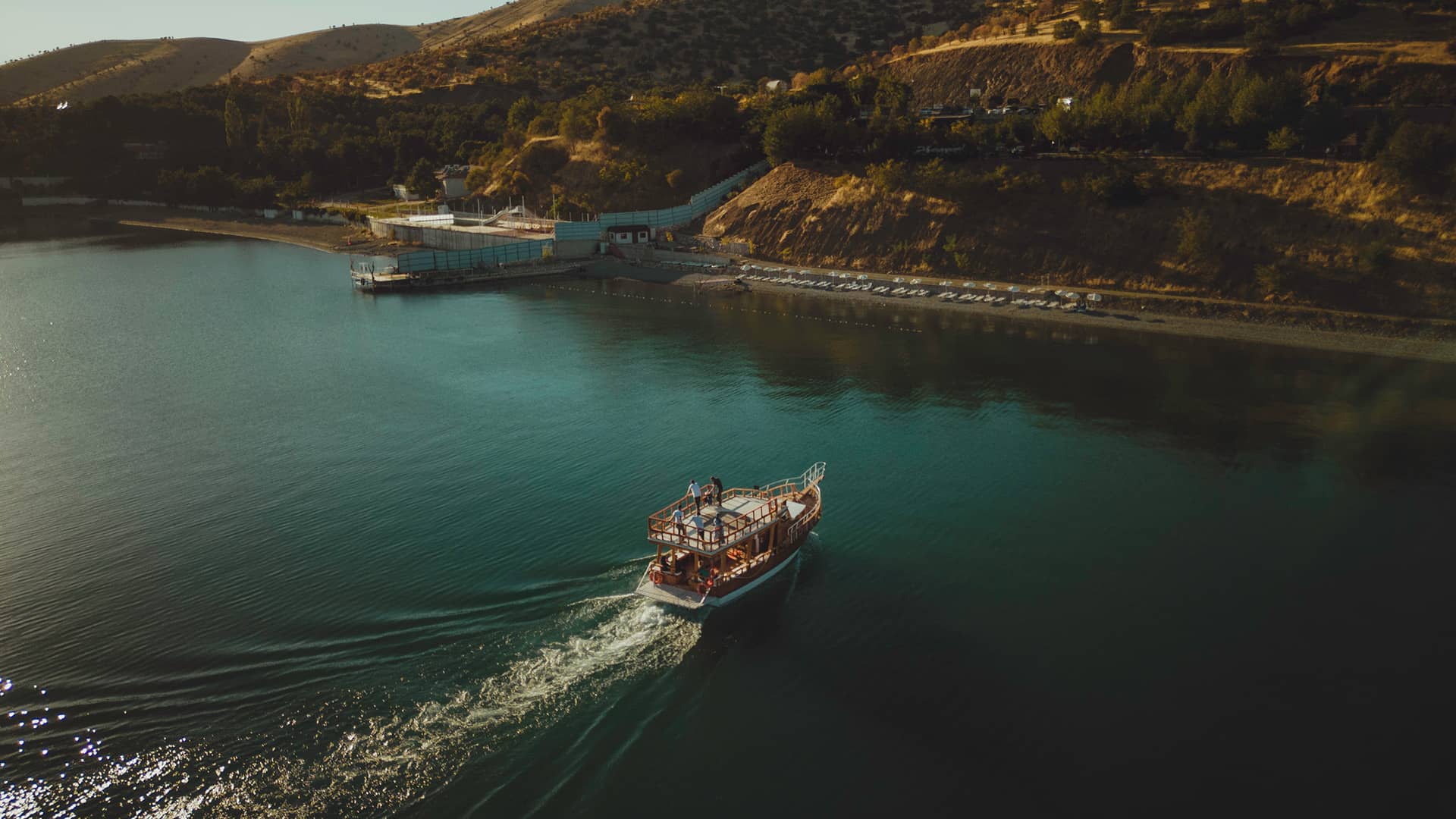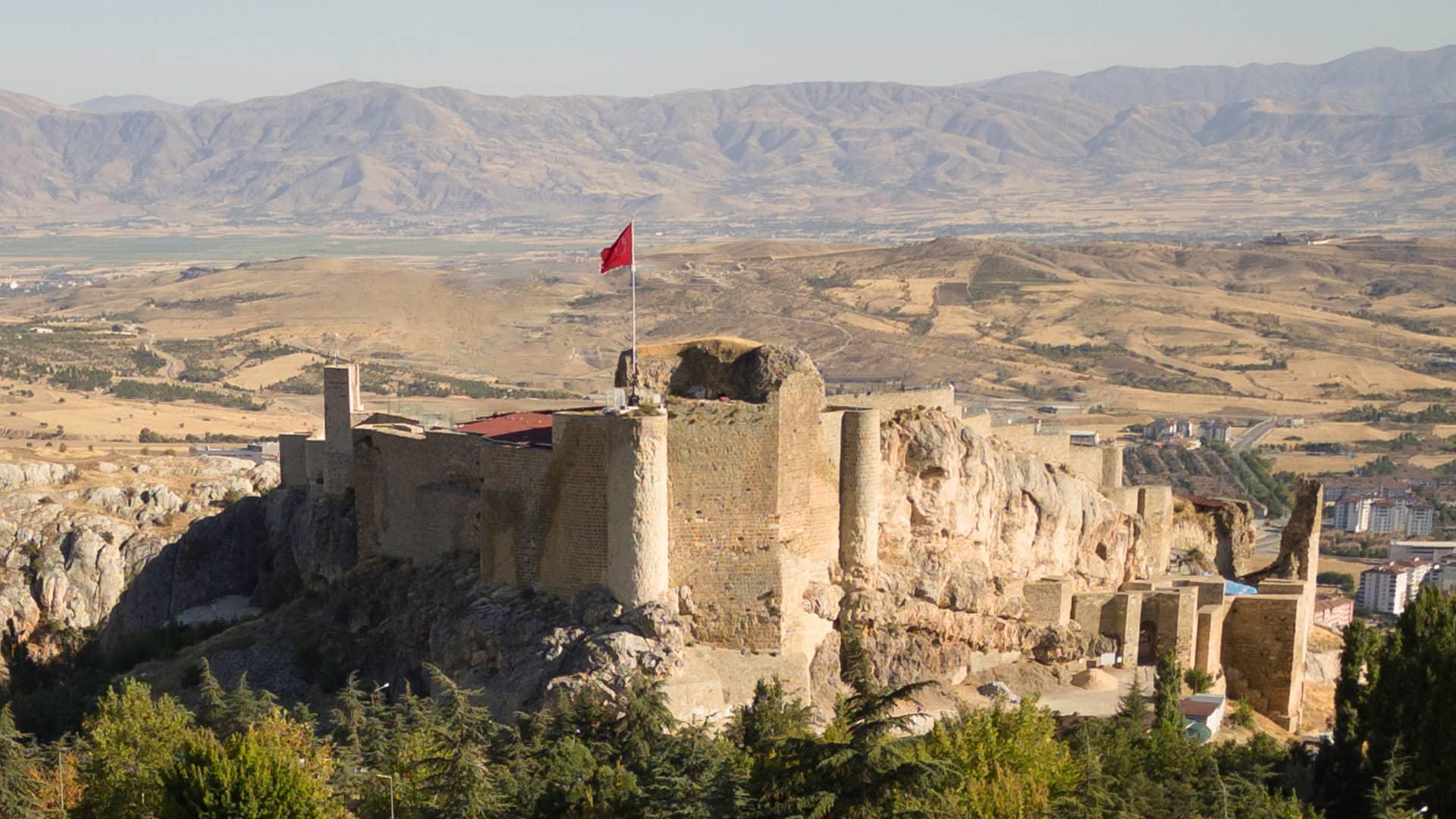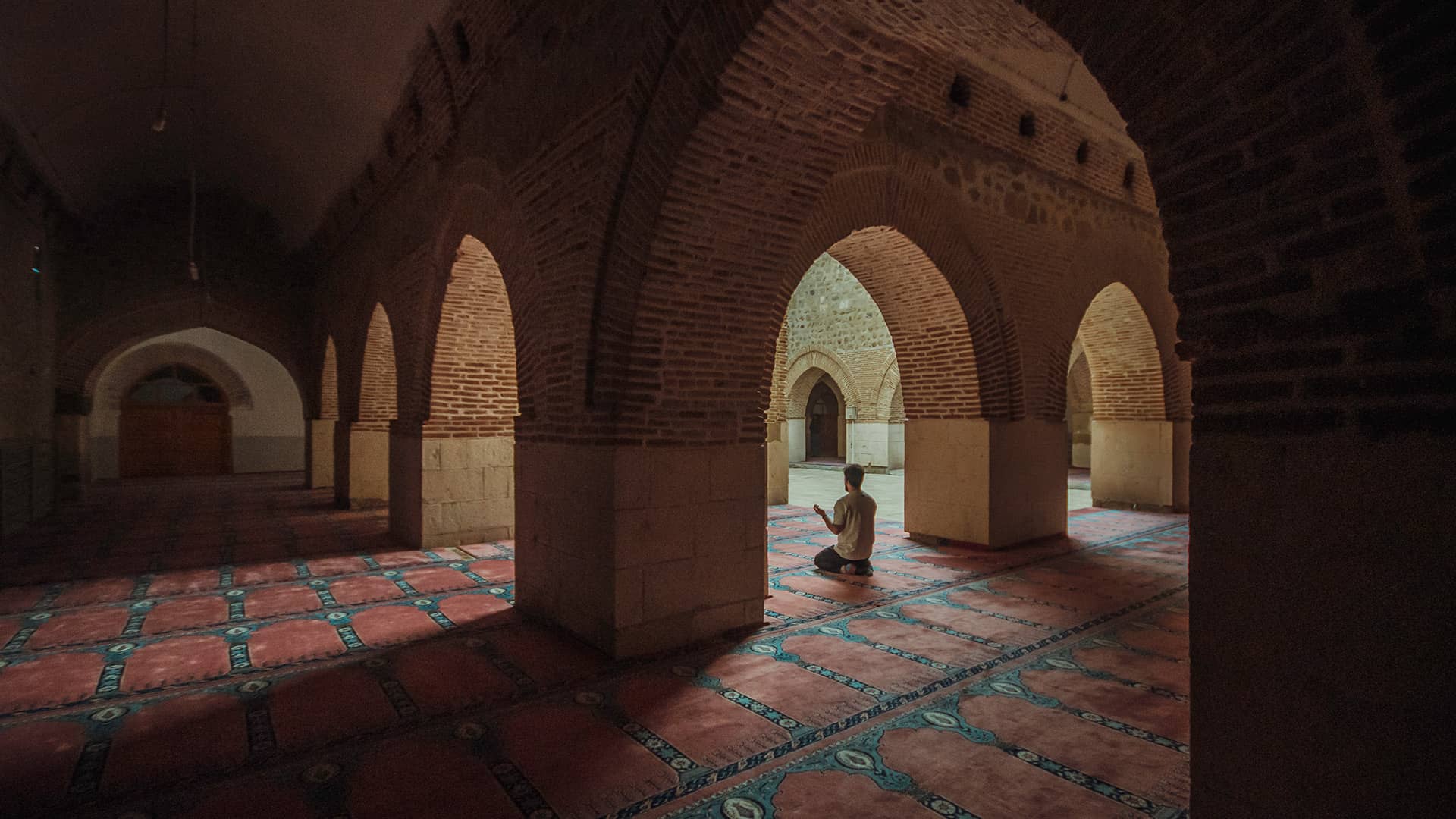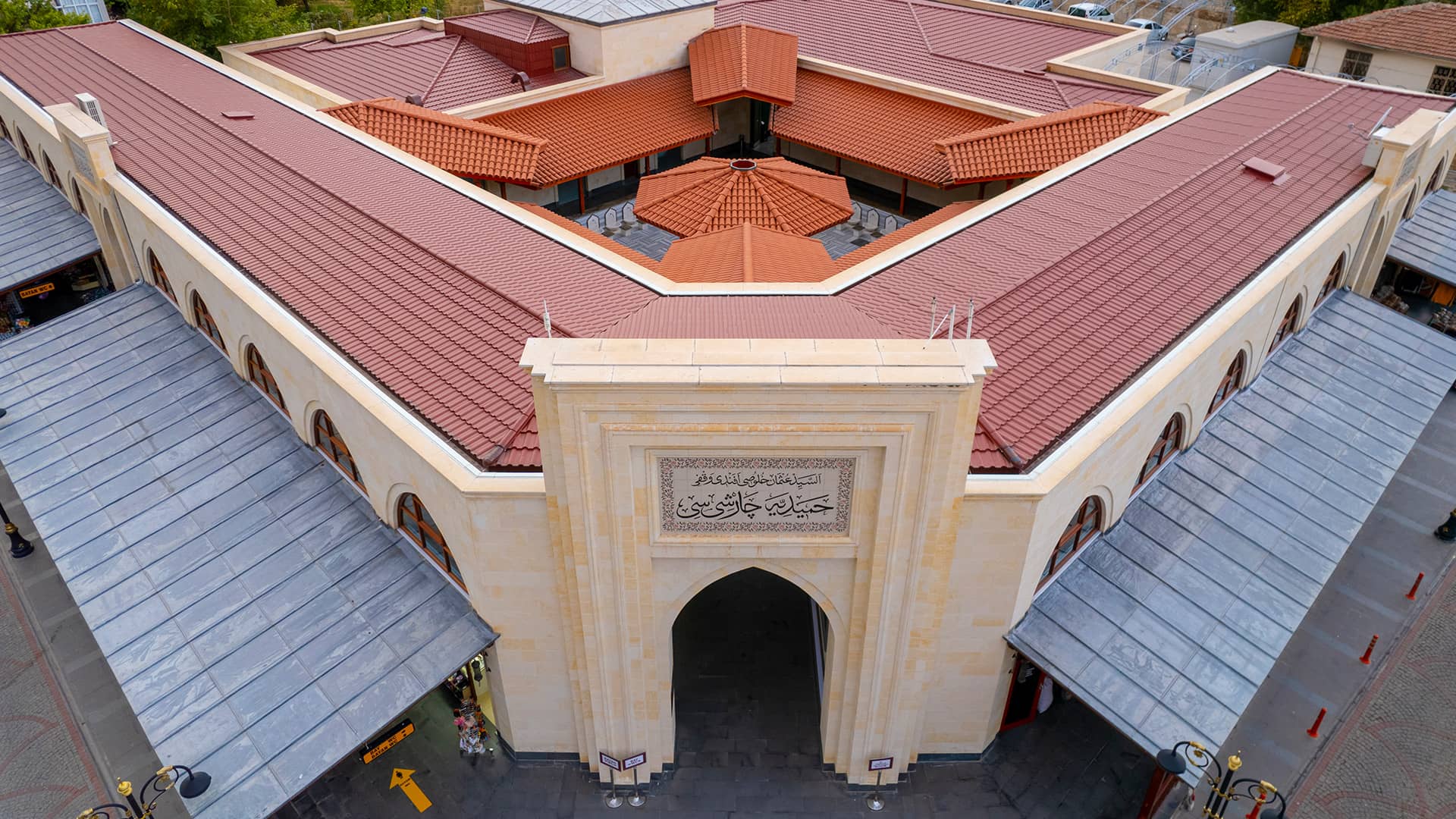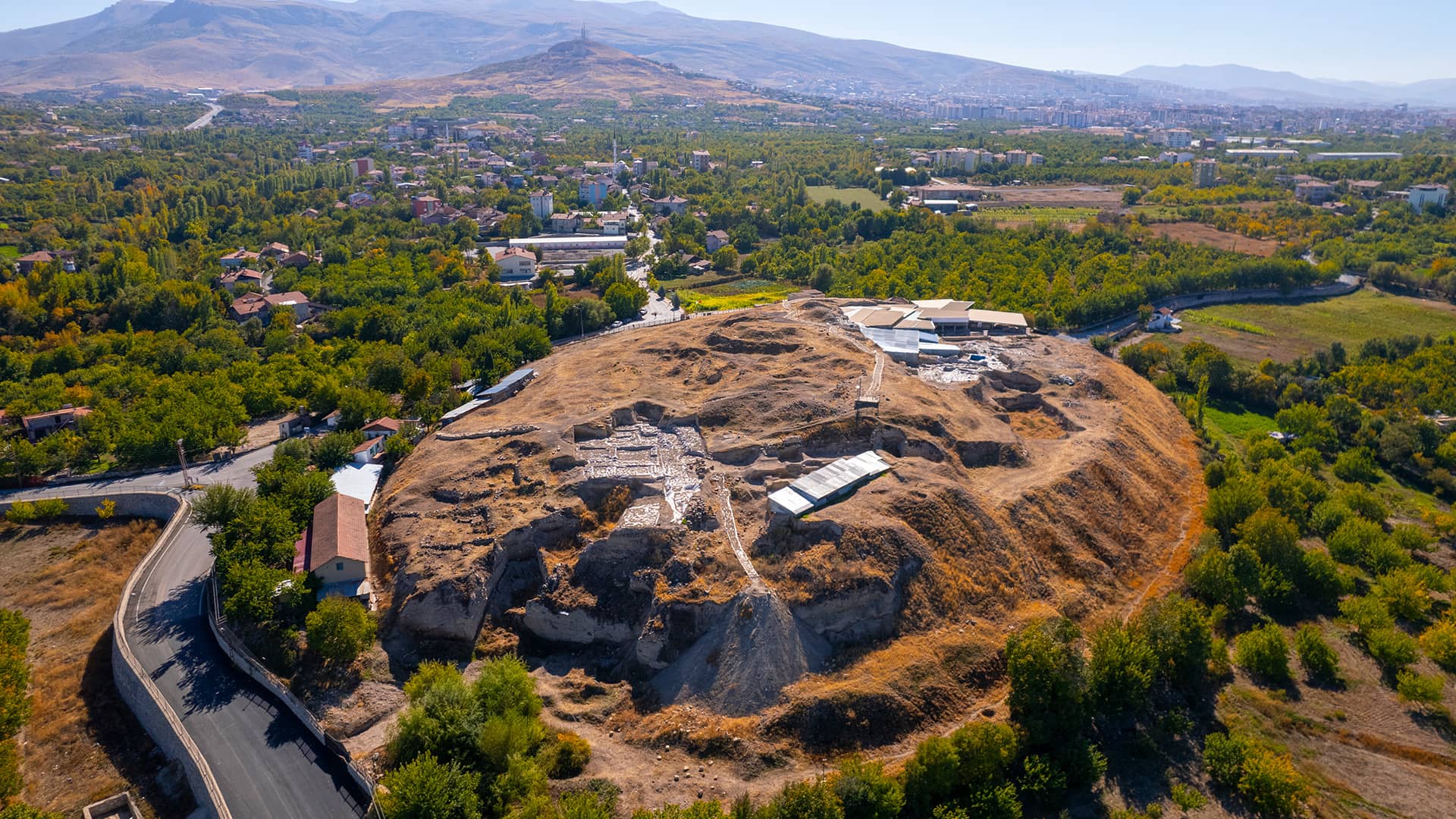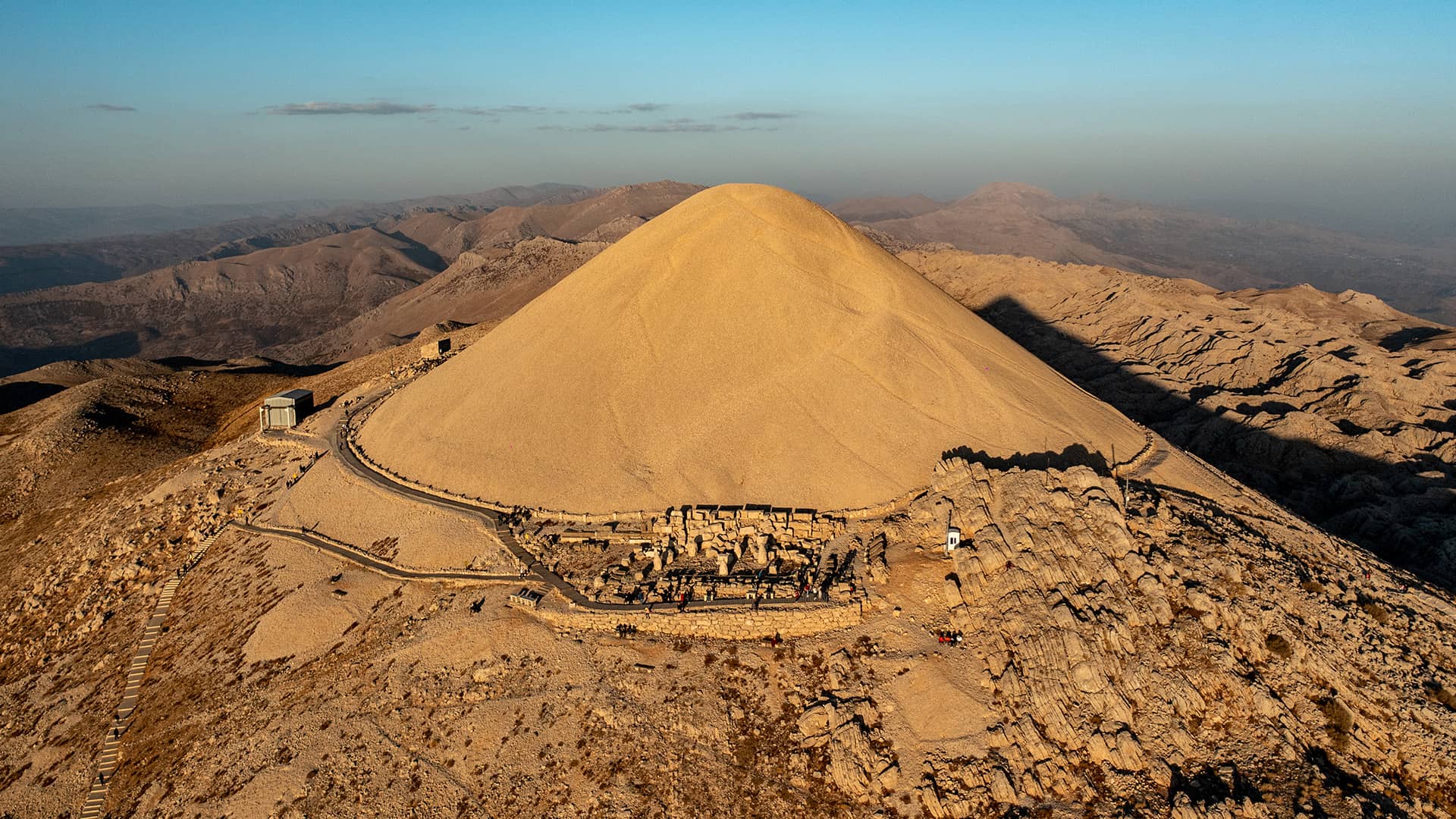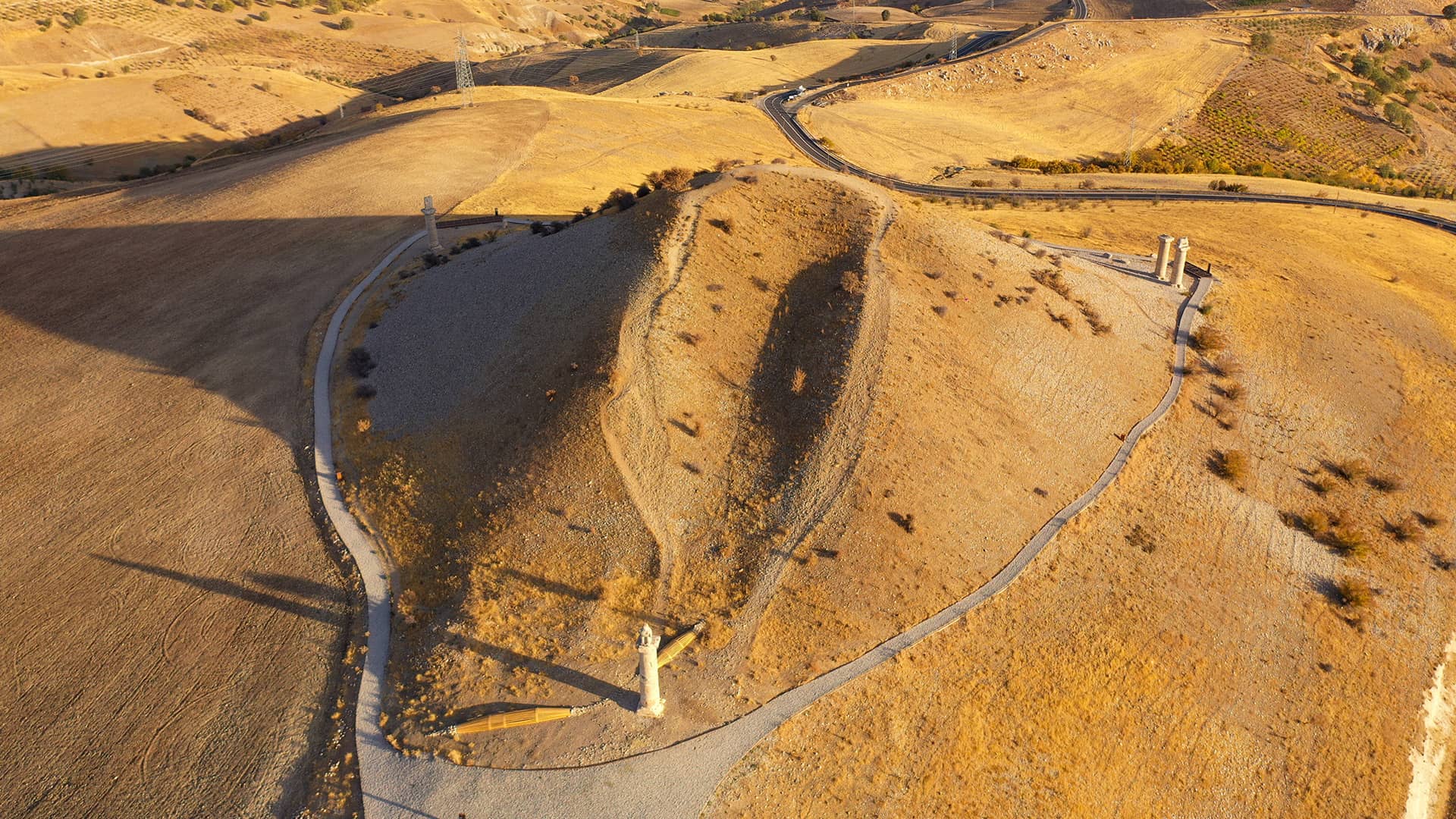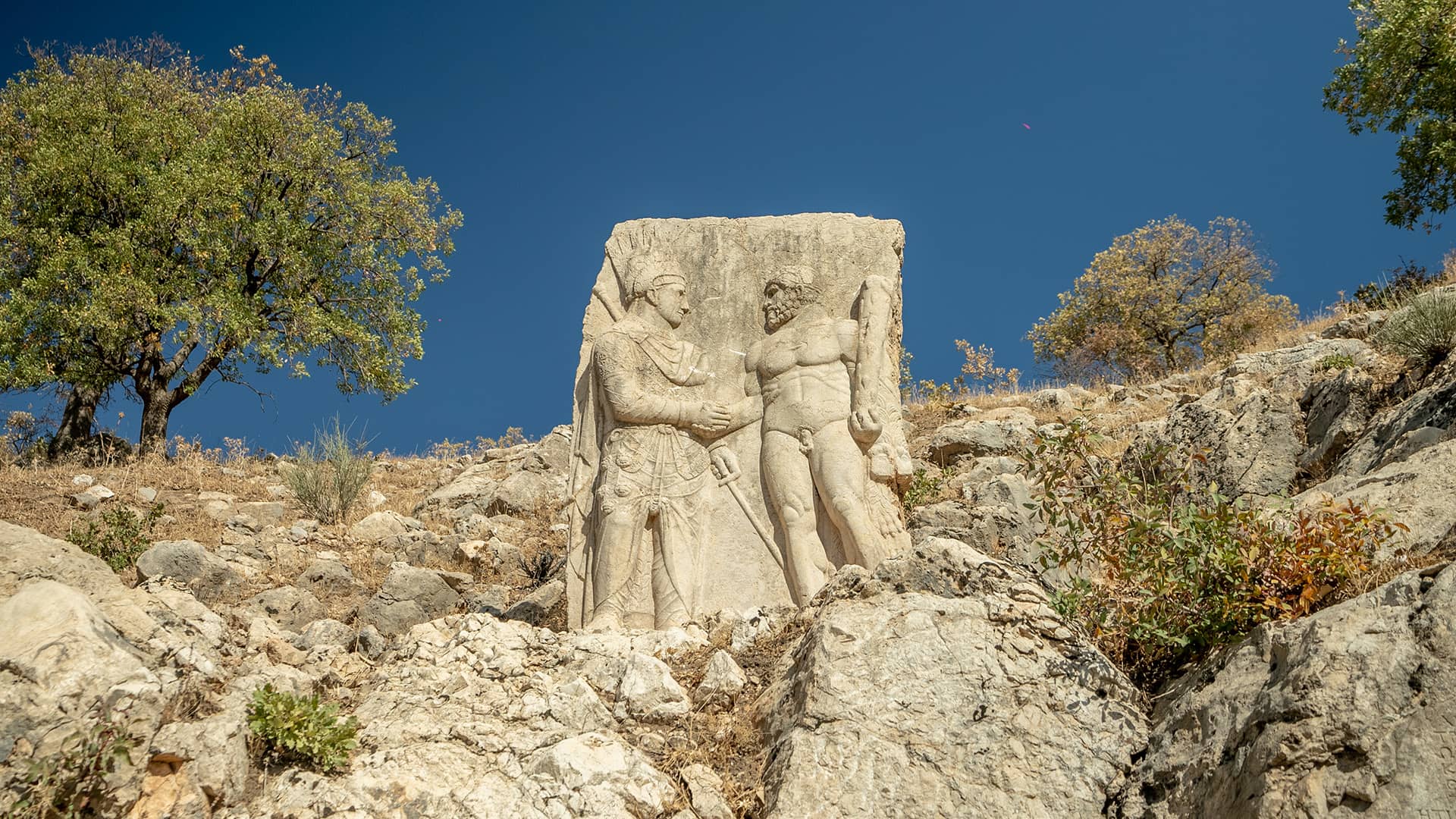

experiences
In The Heart of Civilization
IN THE HEART OF CIVILIZATION: THE SACRED TRACES OF THE EUPHRATES & A JOURNEY WHERE WATER MEETS STONE AND FAITH MEETS HISTORY
Embark on a spiritual journey along the banks of the ancient Euphrates, shaped by the sound of water. Extending from Erzincan to Tunceli, Elazığ, Malatya, and Adıyaman, this route brings together the traces of prophets, saints, kings, and wise women. Sacred structures from the depths of history, the divine realm of gods atop the mountains of Nemrut, and legends whispered for centuries await you.
On this journey that will refresh your soul with the flow of the Euphrates, every stop whispers a prayer, every landscape tells a story.
Come, follow the traces of the Euphrates and rediscover today through the light of the past!
ERZİNCAN
A city of tranquility hidden in the heart of the mountains, at the first bends of the Euphrates. From the graceful complex of Mama Hatun to the deep spiritual atmosphere of Terzibaba, Erzincan blends the serenity of Sufism with the grandeur of nature. Like the prayers echoing through the silent waters of the Dark Canyon, every road in Erzincan is a journey of discovery.
Mama Hatun Complex
This monumental structure, commissioned by the Mengücek ruler Mama Hatun, stands as a symbol of feminine strength and commerce extending from the 12th century to the present.
The Mama Hatun Mausoleum, with its segmented body and conical dome, is surrounded by a circular outer wall that gives it a unique architectural plan and form unmatched anywhere else in Anatolia.
Refahiye Central (Grand) Mosque
Located in the district of Refahiye in Erzincan, the Central Mosque was built in the second half of the 19th century. As its inscription has not survived to this day, its patron and exact date of construction are unknown.Built from locally quarried stone, the mosque fully reflects Western influence. The fact that the architects and craftsmen were influenced by church architecture is evident from its entrance door and pointed-arched windows. It has a rectangular plan and is covered with a hipped roof. Above the entrance door, the continuation of the roof forms a triangular pediment. Its cylindrical minaret, standing on a stone base, is built of cut stone and has a single balcony. In the middle of the large courtyard surrounding the mosque lies the Bahattin Pasha Martyrdom.
Abrenk Church
The entrance gate of the church bears the date 1854. Along with the church, there is also a chapel and two standing stones. These stones attract attention with their architectural form and ornamentation; they bear inscriptions dating back to the era of Seljuk Prince Nasurettin after the 12th century.
Kadıköy Church
Built of cut stone, the church draws attention with the ornamentation of its entrance door. On the lintel above the door, there is a relief of a cross motif. Inside the church, traces of wall paintings can still be seen.
In front of the apse, there is a finely carved wooden panel decorated with elaborate craftsmanship.
KEMALİYE
Hidden among the steep cliffs of the Euphrates, this historical town, with its stone houses, wooden balconies, narrow streets, the Dark Canyon, and the famous Stone Road, is one of the most impressive historical towns in Anatolia and is included in the UNESCO World Heritage Tentative List.
Nature walks and boat tours along the Dark Canyon allow visitors to feel the majesty of the Euphrates up close. In 2021, the historic town of Kemaliye was added both to UNESCO’s World Cultural Heritage Tentative List and to the Cittaslow (Slow City) network. The town stands out for the authentic architectural texture of its houses.
Dark Canyon
Located in the district of Kemaliye in Erzincan, the Dark Canyon is a gorge surrounded by steep rocky slopes formed by the Karasu River, a tributary of the Euphrates. In 2020, it was registered as a Natural Site – a Qualified Natural Protection Area, and it is approximately 25 kilometers long. With a depth exceeding 1,000 meters, a base narrowing to 10–15 meters in some sections, and slopes reaching up to 90%, the Dark Canyon is one of the most striking canyons in Türkiye.
Between two opposite points at a height of 480 meters, special steel cables spanning 450 meters have been installed.
Here, adrenaline enthusiasts perform breathtaking base jumps. The Dark Canyon, one of the highest points in the world where this sport can be performed, attracts great interest from local and foreign visitors and hosts many nature sports events.
Suitable for activities such as rafting, mountaineering, cycling, canoe and boat races, microlight, paramotor, paragliding, off-road driving, and safari, the Dark Canyon also hosts the annual “Kemaliye Culture and Nature Sports Festival” held every May. Another major activity in the magnificent scenery of the canyon is boat tours. The area’s fauna is also noteworthy; animals such as otters, lynxes, and mountain goats can be observed here.
Stone Road
The 7-kilometer-long Stone Road, carved into the hard rocks of the Dark Canyon by local people using primitive tools, possesses exceptional natural beauty and aesthetic value. Listed among the world’s most challenging roads, it features numerous tunnels, sharp bends, and sheer cliffs, offering exploration opportunities both on foot and by vehicle.
TUNCELİ
In the shadow of the mountains where the Euphrates takes its first breath lies a mystical city where nature and faith intertwine. Tunceli is not merely a geography; it is a spiritual universe where water, mountains, and the wind are considered sacred.
You purify yourself in the crystal springs of Munzur, pray in the serenity of Ana Fatma, and listen to the silence atop the summit of Sultan Hıdır. In this land, the heart of the Alevi-Bektashi tradition, faith is not lived alongside nature — it is lived as nature itself. Here, every mountain is a dervish, every stream a prayer, and every path a vow.
Munzur Valley National Park
Stretching between the city center of Tunceli and the district of Ovacık, the Munzur Valley is home to more than 1,600 plant species — 270 of which are endemic to Tunceli — as well as a rich wildlife. Visitors to the national park can observe wild goats, bears, gazelles, wild boars, wolves, and foxes in their natural habitats. While the dominant tree species in the park is oak, other trees such as elm, maple, alder, ash, plane, birch, walnut, and wild hazelnut can also be seen within the rich vegetation of the region.
Ana Fatma Shrine
This site is one of the sacred places in Alevi belief and is located within the Munzur Valley.Every year, tens of thousands of people — mostly women — come here to make wishes. The site takes its name from Hz. Fatma, who symbolizes abundance and fertility in Alevi faith. Hz. Fatma, the daughter of Prophet Muhammad, the wife of Hz. Ali, and the mother of Hz. Hüseyin — who was martyred in Karbala — holds a highly significant place in Alevi belief.
Sultan Hıdır Tomb
The tomb of Sultan Hıdır consists of three main sections. The first is the courtyard, where sacrificial animals are slaughtered and fires are lit. This area is covered with an iron roof. The courtyard, furnished with seating areas, is a place where visitors often spend time.
The second section is the first room encountered upon entering from the courtyard into the tomb. In this room, there are three graves. Although there is no definite information about the identities of those buried here, it is commonly believed that they were guardians of the tomb. In this area, there is also a fine patch of sand known as “teberik.” Some visitors take small amounts of this sand to use in various healing practices.
From this room, one enters the third and main section of the tomb. Here lie the grave of Sultan Hıdır and several other graves, whose upper parts have almost completely disappeared due to superficial renovations.
This spacious chamber is reserved for visitors who stay overnight. There is also a small area containing supplies available for those who wish to spend the night.
İn Delikleri (Dervish Cells)
İn Delikleri consists of around 20 chambers carved into the slopes of the Tahar Stream Valley, west of the district center of Çemişgezek.
The historical cavities, whose purpose and builders are unknown, consist of three levels of aligned rooms illuminated by large windows. There are cisterns and stairways carved into the rocks.İn Delikleri is also known as the “Dervish Cells.”
ELAZIĞ
The stones of Harput, which have hosted the faiths of thousands of years, still whisper prayers.The ancient minaret of the Grand Mosque meets the silent domes of the Virgin Mary Church.The grace of Sara Hatun is reborn in the light of the Euphrates. Elazığ blends the multicultural spirit of Anatolia with the warmth of faith.
Harput Grand Mosque
Also known as the Mosque with the Leaning Minaret, the Harput Grand Mosque was built in 1157 by the Artuqid ruler Fahreddin Karaarslan. The mosque reflects architectural features of both Anatolian and Iranian Seljuk styles.
Virgin Mary Church (Syriac)
The Virgin Mary Church, also known as the Red Church or the Jacobite Church, is one of the oldest churches in Anatolia. Dating back to 179 AD, the church is believed to have been originally used as a pagan temple before Christianity, and later converted into a church by the Syriacs.
It is one of the oldest and most important ancient churches of both Anatolia and Christianity and is still used as a place of worship today by the Syriac Kadim Virgin Mary Foundation.
Located on a high rock adjacent to the southeastern corner of Harput Castle, the church appears as if it is embedded within the rocky slopes of the castle, since its western wall is formed by the rocks themselves. It offers visitors a magnificent view.
Kurşunlu Mosque
Located in Harput and dating back to 1739, this Ottoman-era mosque derives its name from the lead covering its domes. It is famous for its ebony-wood minbar, which was originally part of the Harput Grand Mosque and was crafted using the rare “kündekârî” technique — an intricate wood-joining method that uses no glue or nails.
In the mosque’s courtyard stands a massive plane tree, nearly as old as the mosque itself.
Registered as a Monumental Tree and placed under protection, this tree’s roots protect the mosque’s walls from humidity, while its leaves trap dust and offer cool shade for worshippers and visitors.
Harput Castle
Built by the Urartians in the 8th century BC, the castle is the oldest surviving structure in Harput. The name “Milk Castle” (Süt Kalesi) originates from a legend claiming that due to a drought during its construction, milk from livestock in the area was used in place of water for the mortar. Situated on a steep slope, Harput Castle offers a breathtaking panoramic view.
Coppersmiths’ Bazaar, Wheat Depot, and Covered Bazaar
Operating since 1928, the Covered Bazaar offers dozens of varieties of local products and maintains a lively atmosphere at all hours of the day. The kadayıf used in kadayıf and künefe desserts is freshly produced and sold in the shops here. Within the Covered Bazaar, there are also the Butchers’ Bazaar, where meat from local livestock is sold; the Wheat Depot, where various grains and legumes can be found; and the Coppersmiths’ Bazaar, where copper goods and ornaments are crafted, tinned, and sold.
MALATYA
The breath of Somuncu Baba, the justice of Battalgazi, the silent strength of Arslantepe…Malatya is a city that carries the oldest prayers of humanity into the present day. On its lands, enriched by the blessings of the Euphrates, faith, history, and humanity meet at the same table. Every stone holds a prayer, every step conceals a story.
Battalgazi (Old Malatya) Grand Mosque
The Battalgazi Grand Mosque was built between 1211 and 1220 during the reign of İzzettin Keykavus. It is an important example of the open-courtyard and eyvan-type mosque plan developed by the Great Seljuks in the Iranian region, characterized by a domed space in front of the mihrab and extensive use of glazed bricks and tiles made of baked brick.
Originally, it featured a plaster mihrab and a remarkable wooden minbar crafted in the kündekârî technique. In terms of plaster, tile, and wood decorations, the mosque is among the most significant works of Anatolian Seljuk art and Turkish architectural history.
Somuncu Baba Complex
Located 108 kilometers from the center of Malatya, in the district of Darende within the Tohma Canyon, the complex includes the Tomb of Somuncu Baba, the Somuncu Baba Mosque, the Somuncu Baba Museum, and the Balıklı Pond.
Known among the people as “Somuncu Baba,” Sheikh Hamid-i Veli — one of the great Sufi masters of the 15th century — is buried within the complex.
The lintel above the door of the stone minaret bears the date 1097 AH (1686 AD).
Inside the tomb is also a sarcophagus that reflects the wood craftsmanship of the Republican period.
The complex, which includes the tomb of Somuncu Baba as well as the graves of many spiritual leaders, is one of the most important centers of faith in Türkiye. Surrounding the complex are the natural swimming pool called Kudret Pool, picnic areas, walking paths, restaurants, and local shops, all visited daily by thousands of people.
Arslantepe Mound (UNESCO)
Arslantepe Mound, which was inscribed on the UNESCO World Heritage List in 2021, is located six kilometers from the city center of Malatya. The mound was inhabited from around 5000 BC to the 11th century AD and was used as a Roman village and necropolis during the 5th–6th centuries AD.
Converted into an open-air museum and opened to visitors in 2011, excavations at the site revealed the world’s oldest known mudbrick palace (dating to 3300–3000 BC), a temple (dating to 3600–3500 BC), over 2,000 seal impressions, corridor decorations, a royal tomb, and the world’s oldest known nine swords and twelve spearheads, among many other artifacts.
At the museum entrance, replicas of the Lion statues, wall reliefs, and the statue of King Tarhunza of Malatya — discovered between 1900 and 1932 and taken to Ankara — are displayed. Visitors can see the mudbrick palace, wall decorations, and other remains in the excavation area. Findings that cannot be preserved or exhibited at the site are displayed in the Malatya Museum.
Venk Chapel
Located 27 kilometers from the center of Malatya, in the Çamurlu neighborhood, the chapel bears an inscription reading:
“The door of Saint Kirkor was built by Simon Gabiskos on the 18th of March 1670.”
The chapel has a rectangular plan measuring 12.5 by 6.9 meters. The main worship area is still standing. On either side of the apse are chambers dedicated to saints.
According to the inscription above the door, the chapel was built in honor of Saint Kirkor Lusavoriç.
ADIYAMAN
With the first rays of the sun, the gods awaken on Mount Nemrut, and the wind carries the prayers of thousands of years beyond the Euphrates. Adıyaman offers both the grandeur of Commagene and the serenity of Islam. From the Cendere Bridge to the rock tombs of Perre, the past continues to live in these lands — silent, magnificent, and sacred.
Nemrut Archaeological Site
The Nemrut Archaeological Site is located within the boundaries of the Kahta district of Adıyaman. The tombs and monumental statues built by King Antiochus I of Commagene at an altitude of 2,206 meters on Mount Nemrut, as an offering of gratitude to the gods and his ancestors, are among the most magnificent remains of the Hellenistic period. The monumental statues are spread across the eastern, western, and northern terraces. The well-preserved colossal sculptures are made of limestone and sandstone blocks.
Although its original height was 55 meters, the height of the tumulus has decreased to about 50 meters due to centuries of natural and human impact. Formed by piling up crushed stones with a total volume of 30,000 cubic meters, the tumulus is known to be the monumental tomb of King Antiochus I of Commagene.
Terraces of Mount Nemrut
Antiochus I, who watched the sunrise and sunset from the same throne as the gods, had statues made of himself together with the deities Commagene (Tyche), Zeus–Oromasdes, Apollo–Mithras, and Heracles–Artagnes. On thrones about ten meters high, the colossal statues of the king and the gods sit in rows, accompanied by a guardian eagle symbolizing the celestial sovereignty of the Commagene Kingdom and a lion symbolizing its earthly power.
Behind the thrones lies the religious and social testament of King Antiochus, consisting of 234 lines. On the northern and southern sides of the terrace are relief stelae depicting the Persian kings of the Commagene Kingdom.
In front of the statues on the eastern terrace is a fire altar and a sitting lion statue beside it. Sunrise can be viewed from this terrace on Mount Nemrut. In addition to these reliefs, there is also a lion horoscope relief on the western terrace. From the moon and stars depicted on the lion relief, the date July 7, 62 BC, can be read.
This artifact, considered the world’s oldest known astrological calendar, clearly marks the date of King Antiochus’s accession to the throne.
Karakuş Tumulus
Built on a dominant point overlooking the region, this monumental tomb is visible from every direction. The tumulus has a diameter of 110 meters and a height of 21 meters, and it was covered with stones brought from the Kahta Stream. Constructed in a conical shape, the tumulus resembles an artificial hill. Today, part of it is covered with soil and part with cut stones.
The Karakuş Tumulus takes its name from the magnificent 2.54-meter-high eagle statue standing atop a column on its southern side. The eagle is the messenger of the supreme god Zeus and symbolizes the celestial sovereignty of Commagene.
It is known that the Karakuş Tumulus was built by King Antiochus’s son, King Mithridates II (36–21 BC), in honor of his mother Isias. The tomb contains the graves of his mother Isias, his sisters Laodice and Antiochis, and Antiochis’s daughter Aka.
Arsameia Archaeological Site
Discovered by F. Karl Dörner in 1951, information about the ancient city of Arsameia was obtained after the deciphering of the inscription located at the center of the site. According to the inscription, the founder of Arsameia was Arsemes — an ancestor of King Antiochus I on his father’s side — who lived in the first half of the 3rd century BC.
However, most of the ruins visible today were built by King Antiochus I, who declared the city a Hierothesion (Sacred Area). The term Hierothesion, known only in Commagene, is a Greek word meaning “the sacred tomb of a member of the royal family.” The ancient city of Arsameia was built on steep rocky terrain. The structures located here are accessed by a narrow path used as a ceremonial road. Along this road are relief stelae, a rock-cut monumental tomb chamber, Anatolia’s largest Greek inscription, a tunnel structure, and architectural remains at the uppermost level. In the inscription, these structures are referred to as “Ktismata.”
At the center of the archaeological site, the inscription consists of five columns and a total of 256 lines. Beneath it lies a sacred passageway 158 meters long, accessed by steps descending underground. Next to the inscription stands a relief depicting King Antiochus I of Commagene shaking hands with the god Heracles. Along the “Sacred Road,” arranged as a pathway, there are dexiosis (handshake) reliefs placed at intervals, believed to have been erected to prepare participants for a sacred atmosphere. Each relief carved in limestone depicts King Antiochus I shaking hands with a deity. These reliefs show that King Antiochus considered himself equal to the gods and regarded himself as a divine ruler.
Cendere Bridge
The Cendere Bridge was built over the Cendere Stream during the reign of Roman Emperor Septimius Severus by Marius Perpetus under the command of Alfenius Senecio of the 16th Roman Legion stationed in Samosata, the capital of Commagene, between 198 and 200 AD. The bridge is 120 meters long, 7 meters wide, and has an arch span of 32.20 meters — an impressive width for its time.
Today, there are three columns standing at the bridge’s entrances. Originally, there were four — two on each side. The two columns on the southern entrance were dedicated to Emperor Septimius Severus and his wife, Julia Domna, and bear Corinthian capitals. The other two columns on the northern entrance were erected in honor of their sons, Caracalla and Geta.
After the struggle for the throne between Caracalla and Geta, Caracalla emerged victorious, became emperor, and had his brother Geta killed in 212 AD. He also ordered the erasure of his brother’s name and all traces of him throughout the empire. The fourth column, which no longer stands, was removed by Caracalla himself because it had been dedicated to Geta.
The Cendere Bridge is one of the best-preserved and most solid Roman bridges in Türkiye.
Gerger Canyon
Located within the district of Gerger, at the junction where the Euphrates River meets the Atatürk Dam Lake, this stunning natural wonder is surrounded by steep cliffs. With its deep valleys and breathtaking scenery, it captivates all who visit. Boat tours allow visitors to view the scenery from the water’s surface, while hiking trails offer opportunities for exploration and photography. In the surrounding area, there are ancient caves, rock tombs, and remnants of civilizations’ long past.
Also known as the “Takoran Valley,” Gerger Canyon, with its natural beauty and historical texture, is a place worth discovering for both nature lovers and history enthusiasts.

